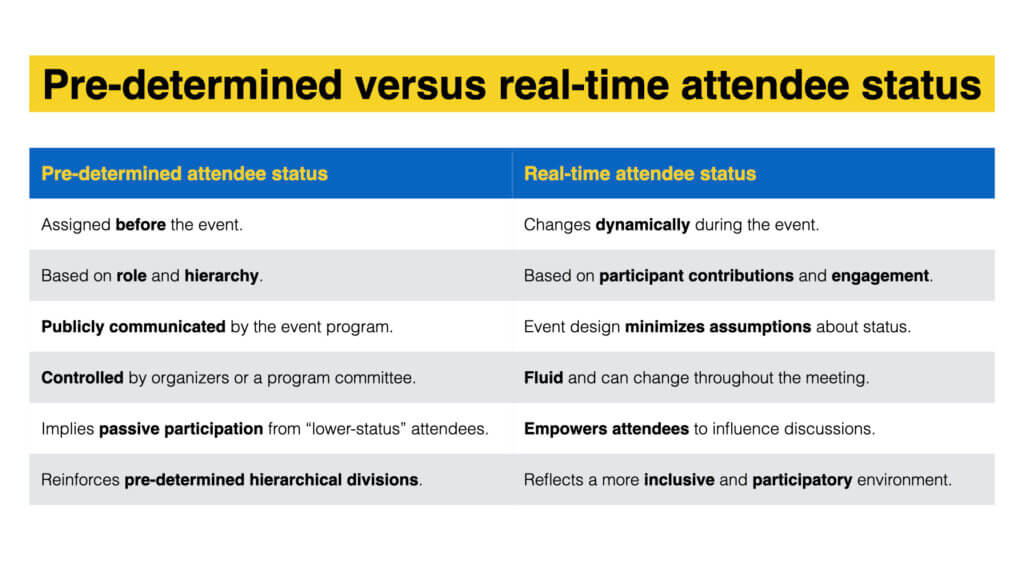Improve your meetings: Make attendee status a real-time construct
Aside from my first book, I haven’t written much about the effects of attendee status — attendees’ “relative rank in a hierarchy of prestige” — at events. It’s time to revisit this important topic because you can improve your meetings by making attendee status a real-time construct.
Traditional event attendee status is pre-determined
Traditional, broadcast-style events assign attendee status in advance. A person’s status is determined before the event by whether they’re speaking and the context. For example, keynoting is of higher status than leading a breakout session. The program committee bestows status on certain attendees. Their status is publicly proclaimed on the pre-conference program, giving attendees no say in the decision.
Peer conference event attendee status is real-time
At peer conferences (and some traditional events), attendee status is dynamic, shifting from moment to moment. Here’s how pre-determined and real-time attendee status compare:

- Empower all attendees — not just a chosen few — to contribute and engage; and
- Support inclusive, active learning by providing a participatory environment.
Minimizing assumptions about attendee status at traditional events
With careful design, even traditional events can minimize assumptions about attendee status.
Read the rest of this entry »
